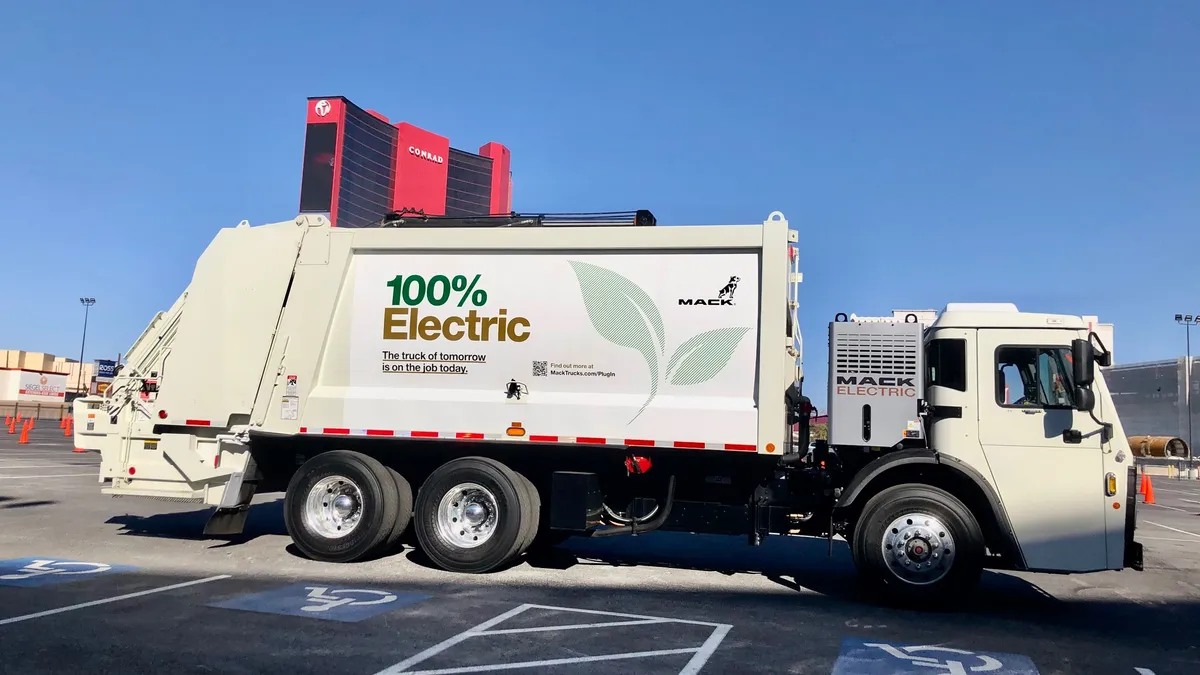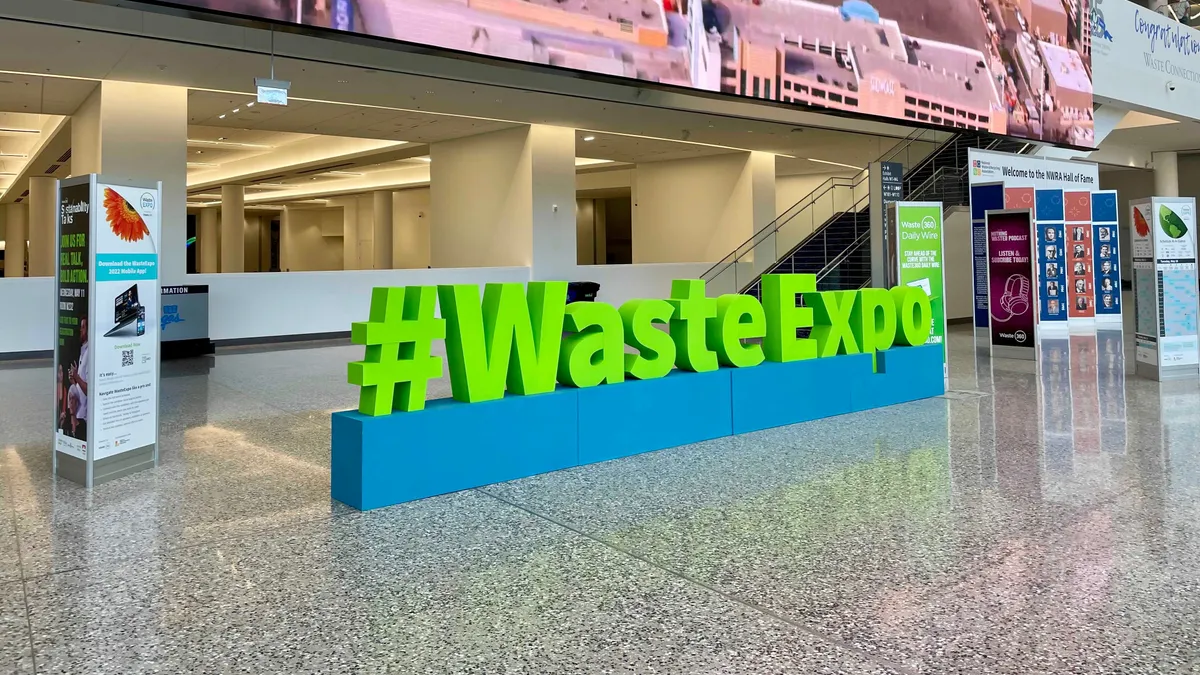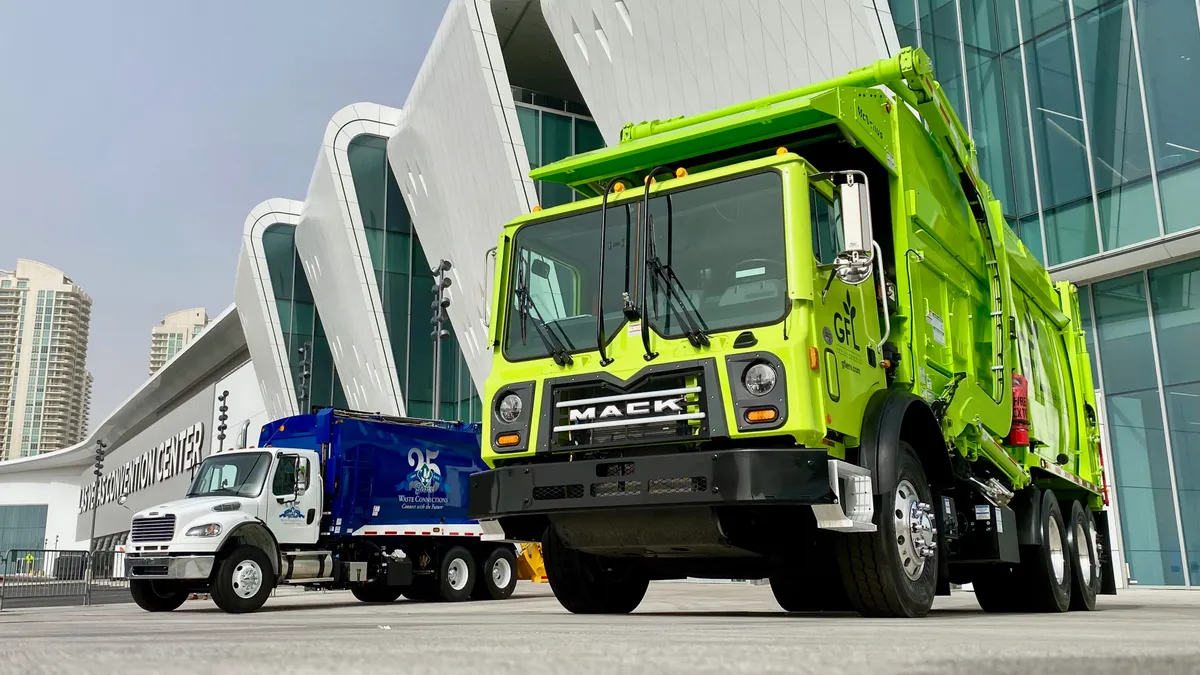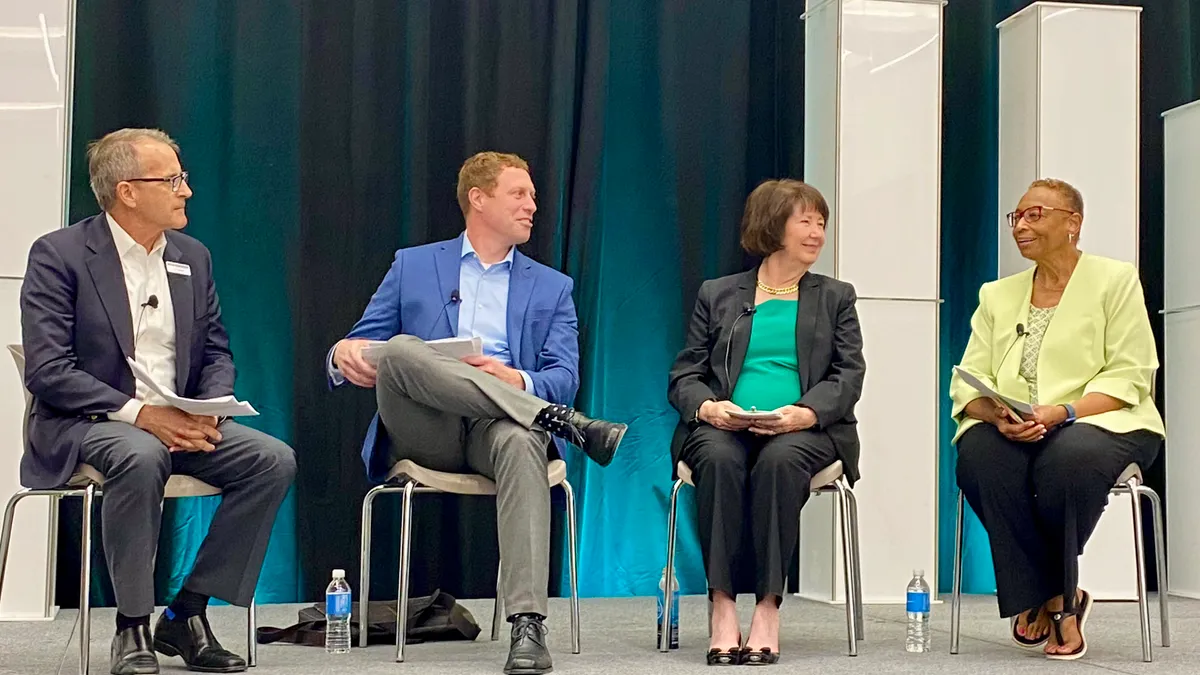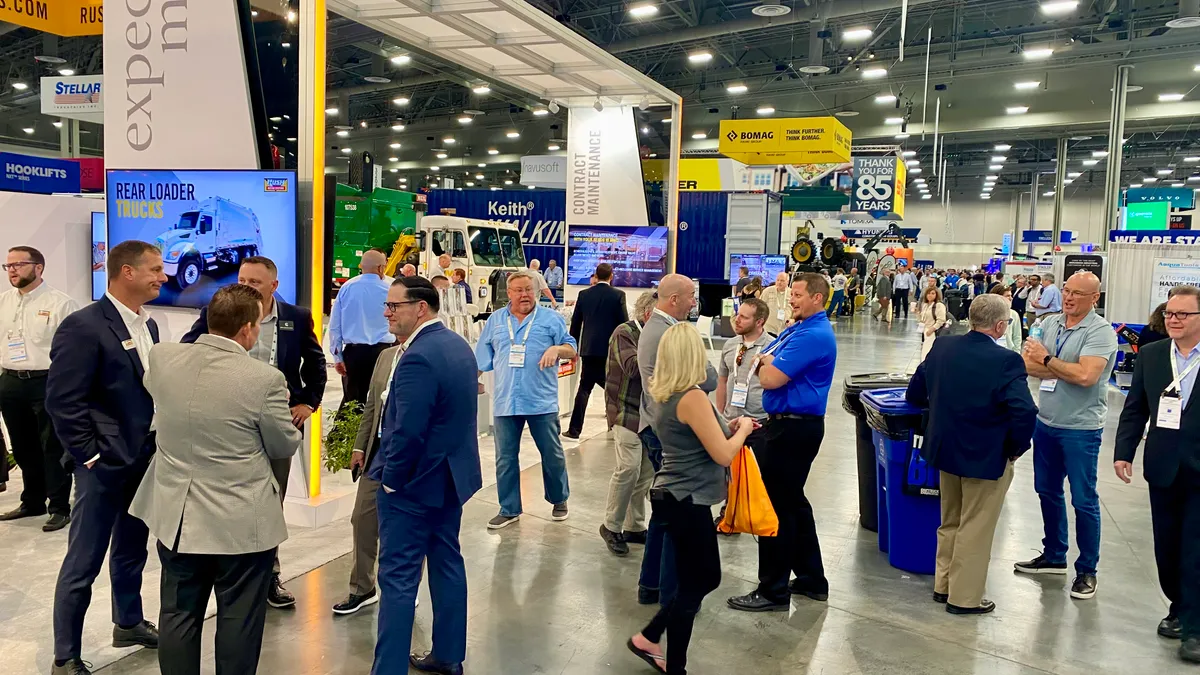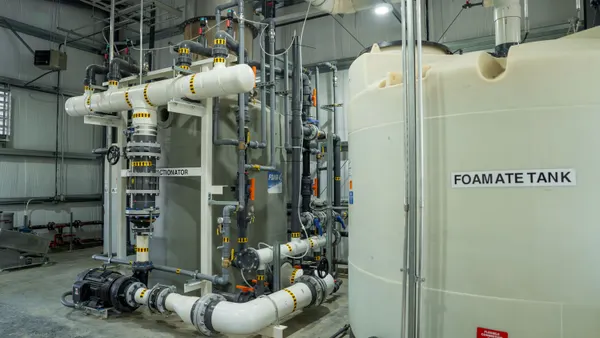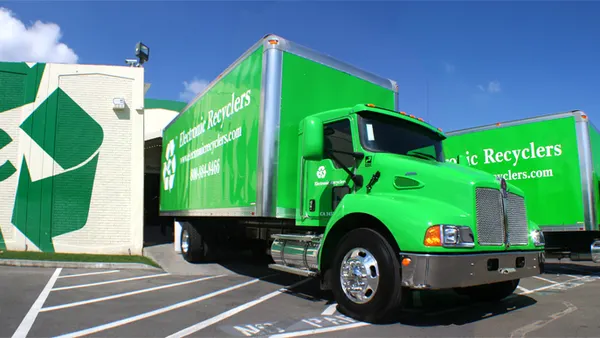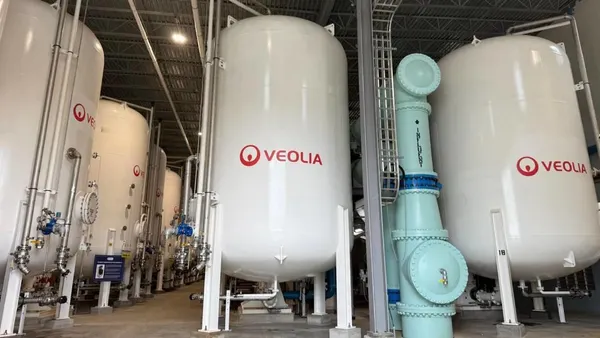How much can change — when it comes to refuse fleet planning — in a year?
A lot, if you ask one of the many vendors or end users at WasteExpo this year eyeing fleet electrification in either the immediate or long term. Throughout a variety of conference sessions and interviews, they cited momentum on environmental, social and governance values and concerns, broader awareness of and exposure to technology, and a sharp increase in diesel prices as among the factors quickly shifting the narrative on the viability of electric refuse fleets.
“We’re gonna get there at scale sooner than people think,” Republic Services CEO Jon Vander Ark said during a session Tuesday afternoon.
The week in Las Vegas spotlighted numerous EV models and chargers on the show floor (and in the parking lot) and included EV-focused panels. At the same time, some other sessions meant to focus on a range of greener fuel options, or worker safety, ended up spurring questions and lengthy conversations on the implications of moving toward widespread electrification.
Those bullish on electric have said before that it's not a matter of if, but when, for the electrification trend to reach refuse; but the consensus was broader and firmer this year.
Driving opportunities
Many believe that local governments are best poised to lead on the transition, given city-led sustainability commitments.
Two of those municipal leaders are Los Angeles and New York City, which in the last few years announced zero-emissions or electric fleet goals (100% by 2035 and 2040, respectively) and pilot plans. For consecutive conference years, sanitation officials from those cities were featured in a spotlight session on their progress. One notable update from DSNY since last year – NYC’s trucks from Mack now have snow plow capacity, a unique necessity given the department's charge to clear streets. This follows concerns that electric would not provide the necessary power to enable plowing.
Leaders from those sanitation agencies — and throughout the conference — doubled down on a key message that came up last year: the importance of securing power and infrastructure early in the planning process.
"I don't think the trucks are going to be a challenge anymore," said LA Sanitation & Environment’s Robert Potter, sanitation solid resource manager. The real challenge is working with utilities to upgrade facilities. And given the sustainability-driven political leadership in LA, “We don’t have a lot of roadblocks, we just have a lot of work,” Potter said.
Following in LA and New York’s footsteps recently was Florida's Miami-Dade County, whose first large electric refuse truck was on display with a wrap highlighting that it will be “powered by the waste it collects,” leveraging the county-owned waste-to-energy plant. Solid Waste Management Director Michael Fernandez said a preliminary analysis suggested that, based on current diesel prices, the county could see a return on investment on the electric truck in four years. While Miami-Dade's first truck of this kind is from Mack, Fernandez said the county plans to partner with multiple manufacturers as it assesses what makes sense in the future.
Fernandez said that to get the public sector even more involved, manufacturers ought to assist further on grants and other supports. "It comes down to the manufacturers to help lobbying this point," he said, "and get in there and change some of this legislation to help open the floodgates basically to provide an incentive like what happened with [compressed natural gas] many years ago."
XL Fleet and Curbtender, which announced a partnership last year to bring refuse EVs to market, unveiled at the show an under CDL model — a smaller truck build that doesn't require a driver with a commercial driver's license — that they hope will appeal to sustainability-driven cities running routes downtown, in parks or the like. Company executives also make the case that because it doesn't require a worker to obtain a CDL, is built on a Ford F-600 chassis, and charges using a DC fast charger, it may be a more accessible option than Class 8 trucks for some users.
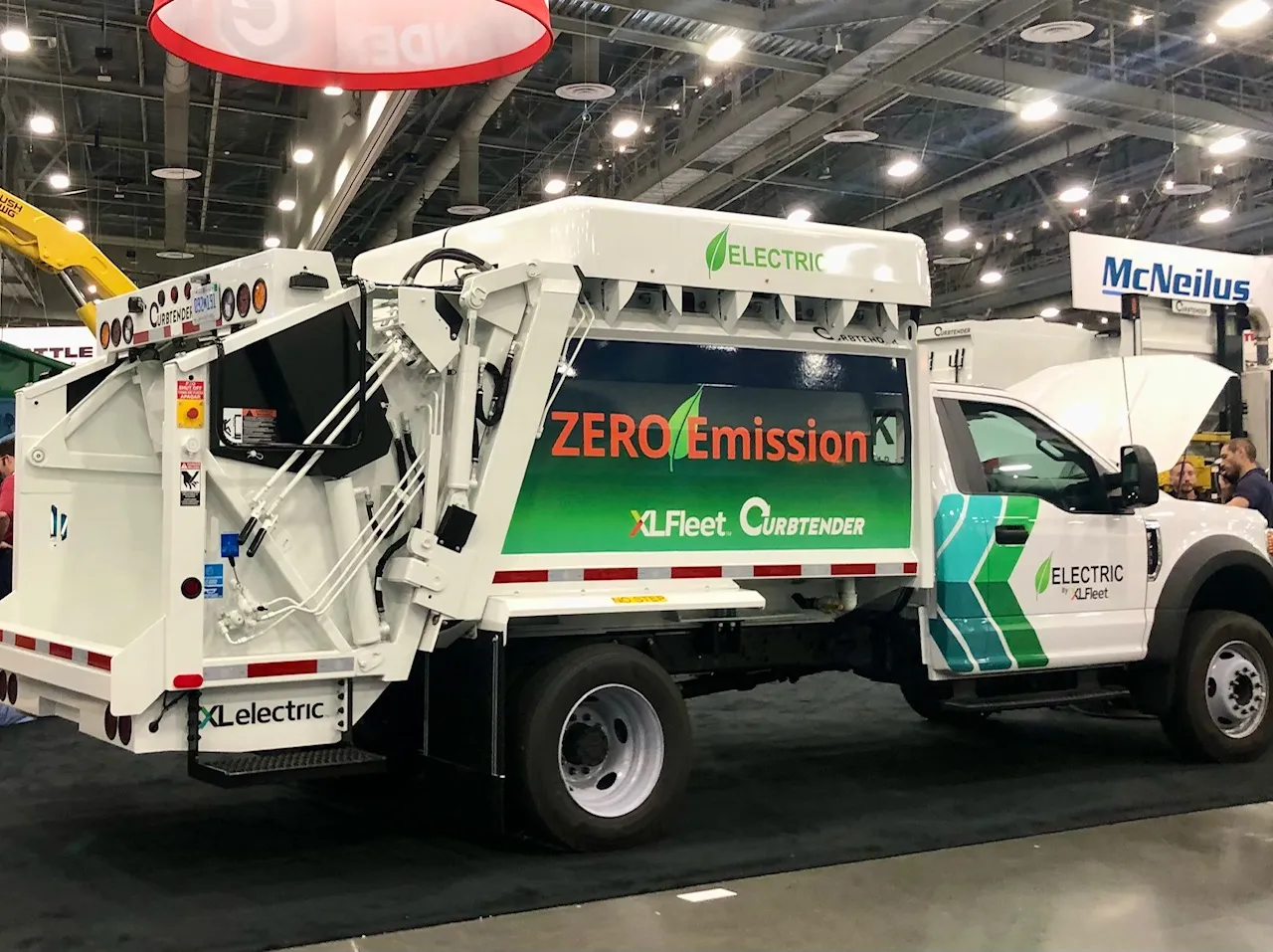
Emerging concerns
While there may be fewer vocal critics of the truck technology for refuse applications, other issues have come to the fore as top concerns fleet operators interested in making the transition must consider.
When it comes to infrastructure concerns, they go beyond just power for charging: it's also an issue of space. For instance, DSNY officials noted challenges associated with siting chargers in the city's limited garages.
The switch to electric presents a new set of safety considerations, too, like ensuring proper maintenance and even just being aware of trip hazards from cords, said Amy Soderquist, director of sales for EV operations at engineering consultancy SEAM Group.
Separately, experts and attendees alike brought up the climate-related vulnerabilities that could arise if fleets lean too heavily into electric. What happens if a wildfire or hurricane wipes out access to electricity?
Marc de Smidt, vice president at Autocar’s ACX Refuse Engineering, urged fleet managers and other end users to get involved in public meetings. There's "immense pressure to go with electric," he said. "We need to get involved as an industry."
As for supply chain constraints: "as everyone's saying, it's not getting all that better, but it's not getting that much worse," said Battle Motors CEO Michael Patterson.
And as more electric capacity comes online, many experts reiterate that it will be an "all of the above" approach to gradually greening fleets. That is, fleets may see a diverse combination with diesel, compressed natural gas, hydrogen and others. Fleets have a desire to simplify, but are going to need to start combining offerings, de Smidt said.
Stifel Managing Director Michael E. Hoffman said — when recapping a panel conversation with CEOs from Casella Waste Systems, Waste Connections, GFL Environmental and WIN Waste Innovations — that while powertrains are likely to be electric, the fuel source remains in question. Hoffman was unsure that current batteries will satisfy payload and hours of service needs, but was more optimistic that some type of fuel cell or hybrid technology could be a solution.
Likewise, predictions on when widespread electrification will occur vary. "I'm a firm believer that we're going to transition our entire fleet in the future," Fernandez said. But that's a ways out — for Miami-Dade, that may be 2040 or 2050, he said.
Scott Scholz, a general manager at GreenWaste Recovery in California, thinks 2030 is a possibility as well. "I think you don't need to set 2040, 2045 timelines — I think it can be done a lot earlier," Scholz said. "I think those can be brought in as cities start moving toward that direction."
Infrastructure planning is hard because it relies on educated opinions on what technologies we're going to be using in the future, speakers said. But ultimately, de Smidt made the analogy that those predications may be about as reliable as a long-term weather forecast.



